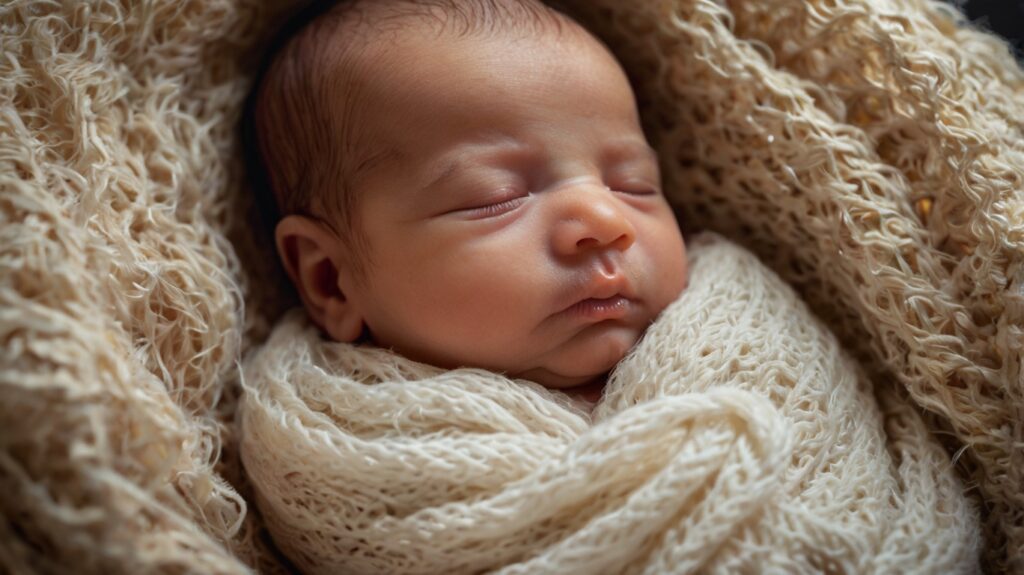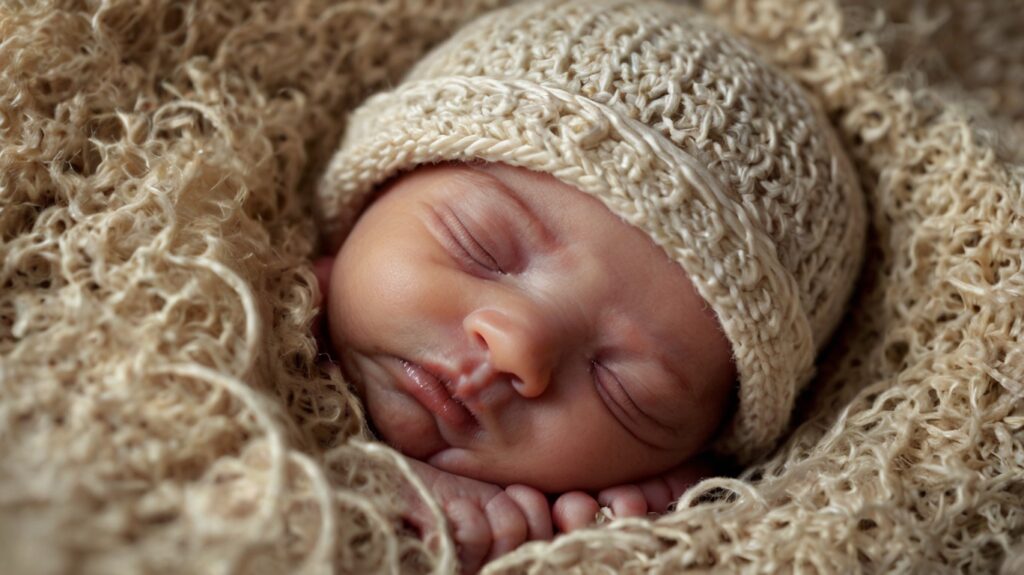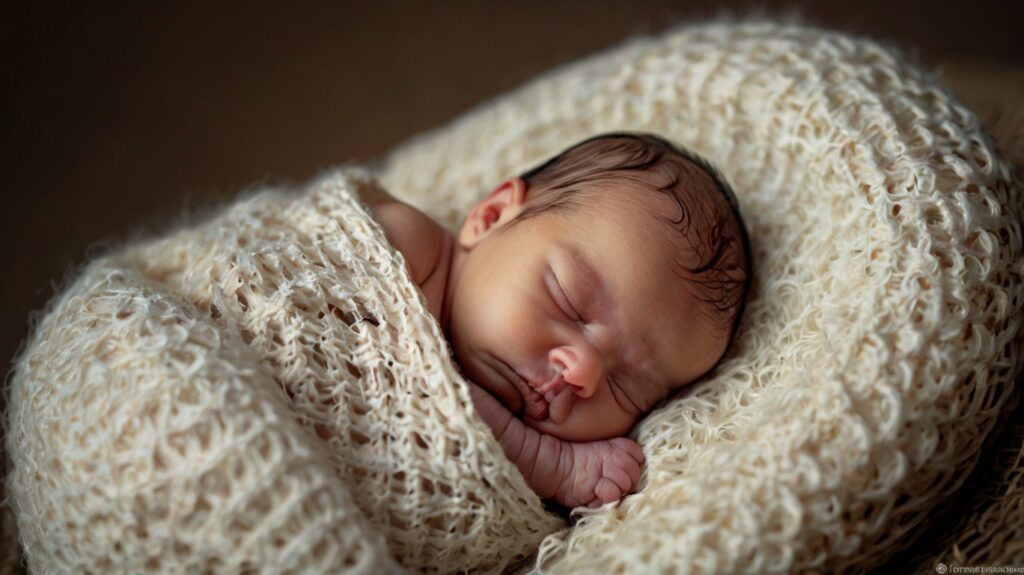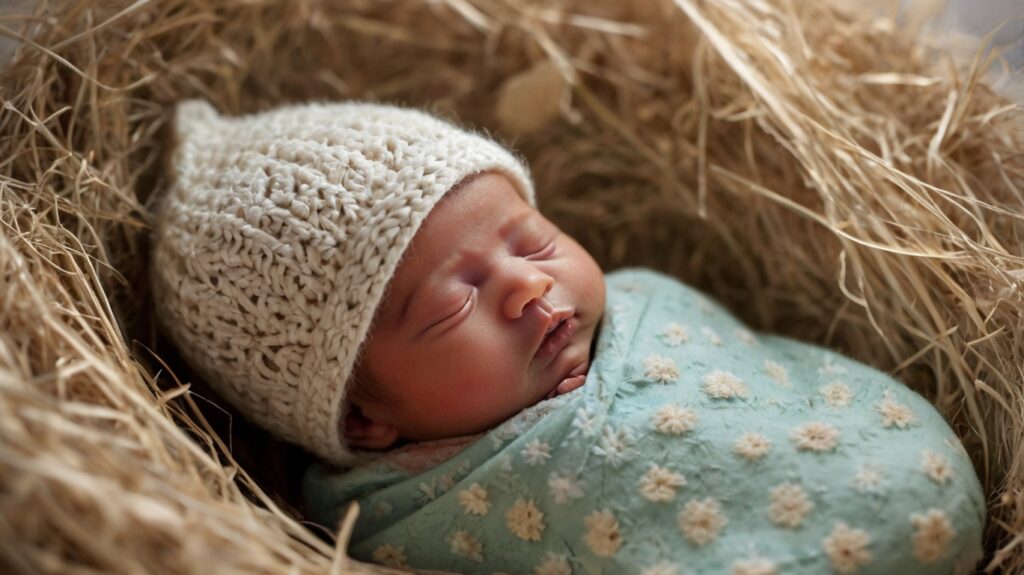
At two weeks old, a newborn is still very much adjusting to life outside the womb. During this delicate and tender stage, a baby’s days and nights revolve primarily around sleeping, feeding, and bonding with their parents—especially mom. One of the most heartwarming sights is a tiny 2-week-old baby peacefully sleeping in their mother’s arms, sometimes comforted by the gentle sucking of a pacifier. This early period is crucial for both the baby’s development and the emotional connection forming between parent and child.
Sleep Patterns of a 2-Week-Old Baby
At two weeks, newborns sleep for most of the day—typically between 16 to 20 hours—but their sleep is fragmented into short stretches lasting from 1 to 4 hours. This irregular sleep cycle is due to their developing nervous systems and their need for frequent feeding to support rapid growth. Sleep during this time is mostly composed of active (REM) sleep and quiet (non-REM) sleep, with babies often twitching, making noises, or fluttering their eyelids during active sleep phases.
Because their circadian rhythms—the internal body clock that regulates sleep and wakefulness—aren’t yet established, 2-week-old babies do not have a clear day-night sleep pattern. This means they might sleep just as much during daylight as at night. As a result, caregivers often find themselves up at all hours, gently rocking or holding their baby to help them fall asleep.
The Comfort of Sleeping in Mom’s Arms

There is something uniquely calming about a newborn sleeping in a mother’s arms. Skin-to-skin contact, also known as kangaroo care, has been shown to regulate a baby’s temperature, heartbeat, and breathing. The warmth and rhythm of mom’s body provide reassurance and security, often helping babies settle more quickly and sleep more soundly.
For the mother, holding a sleeping newborn promotes the release of oxytocin—the “love hormone”—which enhances bonding and reduces stress. This intimate closeness is a foundational part of early parenting and helps establish a nurturing connection between mother and child.
The Role of the Pacifier

Pacifiers can be a wonderful tool for soothing a newborn, especially when they are calm but still seem to need a little extra comfort. The sucking reflex is strong in newborns and is a natural way for them to self-soothe. Sucking on a pacifier can help reduce fussiness, assist with settling down for sleep, and even decrease the risk of sudden infant death syndrome (SIDS) when used appropriately during sleep.
At two weeks, some babies may take to a pacifier right away, while others may need more time or prefer the comfort of breastfeeding or being held. If a pacifier is introduced, it’s important to ensure it’s clean and safe, and that use is monitored to avoid nipple confusion in breastfeeding babies.

Creating a Soothing Environment
For a 2-week-old baby sleeping in mom’s arms with a pacifier, the environment also plays a significant role. Soft lighting, gentle sounds such as lullabies or white noise, and a calm atmosphere can all contribute to the baby’s ability to relax and fall asleep. A mother’s gentle voice or light stroking often accompanies this soothing routine.
Final Thoughts
A 2-week-old baby sleeping peacefully in mom’s arms while sucking on a pacifier is a beautiful snapshot of early life. It reflects a phase marked by vulnerability, growth, and deep emotional connection. These quiet moments are essential for both baby and mother, offering comfort, security, and a foundation for healthy development and bonding.